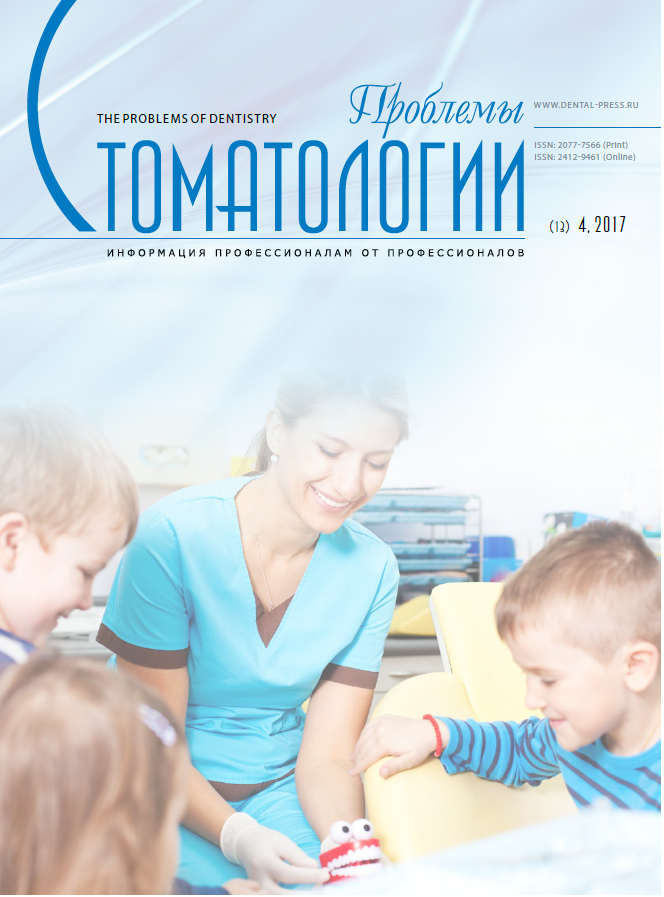Ufa, Russian Federation
Russian Federation
Subject. Despite upgrading of methods of surgical recovery of total face defects it’s hard to achieve esthetic results. Thanks to implementation of extra-oral implants and production of individual silicone prostheses of external ear, orbit, nose and their compilations it became possible to achieve high esthetic results and firm prosthesis fixation. In the article there is an algorithm showing the choices of extra-oral implants at total face defects keeping in mind the origin of the defect (innate, acquired posttraumatic, postresection) local beam-therapy, which is carried out during the illness and the expected lifetime of the patient. The goal of the research is working out an algorithm of application various implants for innate or acquired total face defects. Methodology. The experience of various extra-oral implants that were used for 50 patients with total defects of external ear, orbit, nose and compilation of those defects was analyzed. Results. The analysis showed that with beamed orbit (total radiation dose higher than 46gr) the implant’s success was 92.5%(25 implants). 2 times implants did not receive osseointegration and during the step of placing the healing cap were removed. With patients with the defect of external ear the frequency of successful osseointegration was 96.2%. 2 times due to cicatricial deformity of skin and periosteal coverage in the zone of defect acquired during thermic burn implants were not integrated. 1 time during the application of covered osseofixated magnet implant in orbit of a 10 year old child a decubital gangrene was formed. Conclusions. Application of extra-oral implants of various types for total face defects proved to its clinical efficiency by differentiated approach considering individual anatomical conditions, cause of the defect and the expected lifetime of the patient.
anaplastology, Facial prosthesis, extraoral implantation
1. Ivanjack F., Konstantinovic V.S., Lazic V., Dordevic I., Ihde S. Assessment of Stability of Craniofacial Implants by resonant Frequency Analysis. Journal of Craniofacial Surgery, vol. 27 (2), pp. 185-189.
2. Jacobsson M., Tjellström A., Fine L., Andersson H. A retrospective study of osseointegrated skinpenetrating titanium xtures used for retaining facial prostheses. Int J Oral Maxillofac Implants. 1992, no.7, pp. 523-528.
3. Oliver C. Thiele The current state of facial prosthetics - a multicenter analysis. Journal of cranio maxillo facial surgery, 2015, vol. 43 (7), pp. 1038-1041.
4. Farmand M. Ein neues Implantat-System für die Befestigung von Epithesen (Epitec(r)-System). Dtsch Z Mund Kiefer Gesichtschir, 1991, vol. 15, pp. 421-427.
5. Philipp A. Federspil Implant-retained craniofacial prostheses for facial defects. GMS Current Topics in Otorhinolaryngology. Head and Neck Surgery, 2009, no. 8.
6. Sel'skiy, N. E. Otdalennye rezul'taty ispol'zovaniya razlichnyh fiksiruyuschih elementov v licevom protezirovanii / N. E. Sel'skiy, I. O. Korotik, D. M. Muhamadiev // Annaly plasticheskoy, rekonstruktivnoy i esteticheskoy hirurgii. - 2016 - № 2. - S. 34-42.



















